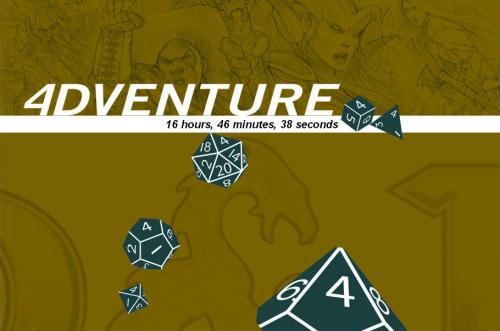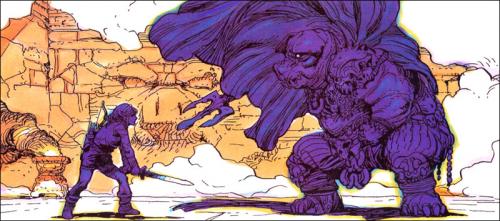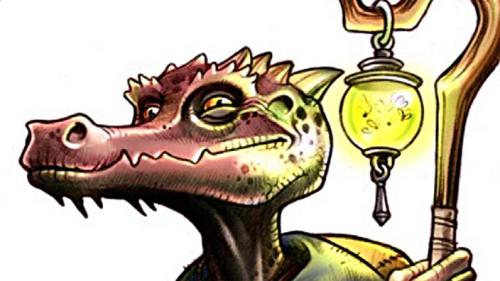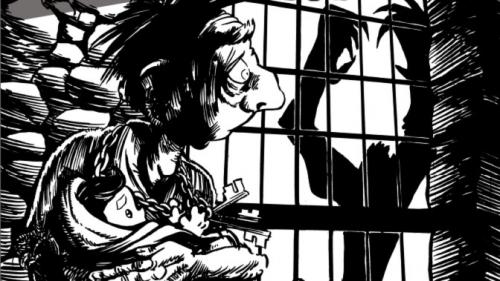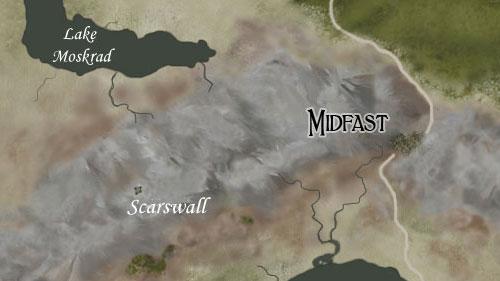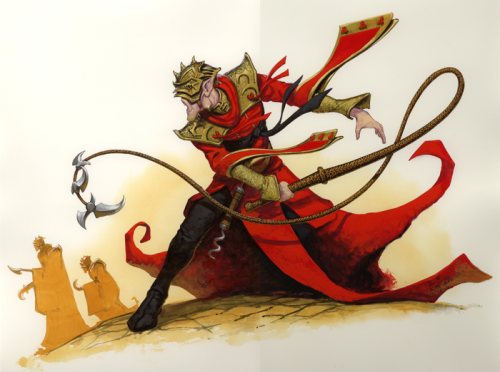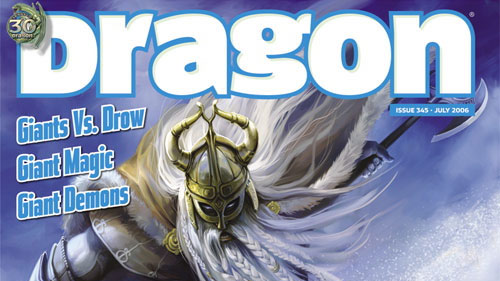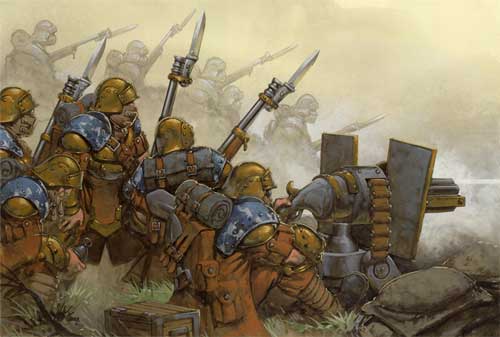Looks like Wizards of the Coast have a hankering to squeeze out another set of core rulebooks. Sigh.
Category Archives: DnD
Horrible Character Names
A recent thread on 4chan‘s /tg/ channel saw the emergence of a plethora of bad character names for use in RPGs. Please feel free to sprinkle these into your own campaigns:
- Dmitri Faganella
- Ted Vecna
- Uncle Touchy
- Featherhair Gayswallow the Elven Bard
- Hue Jass
- Sephiroth D’Urden (dual wields giant sized katanas)
- Elrond Hubbard
- Any combination of Dark, Raven, Blood, Wraith, and or “cool” first names
- Any name starting with “Richard”
- Leonard Michaelangelo
- Rick Hackstabber
- Anything with an apostrophe
- Rangers named Walker
- Big McLargehuge
- Spanks McGee
- Axebeard Beardaxe
- Yuu
- Mii
- Kha’k Mhonglaer
- Lon Ornemint, the Bardin’ Gnome
- Hank
- Flaggin Mcfloggin
- Rollo Crotchfinger the cleric
- Damme Strohng
- Big Daddy Cumbuckets
- Gilbert Michael “G.M.” sucksass
- Pun Pun
- Rik Ast’li
- HUGE
- Whatever the GM’s name is
- Blork the Unquestable
- Facepalm Jaypeg
- Fi-Tor
- Imoen
- Jimmy Changa
- Boleg the flatulent
- Backstab Mctraitor
- Stabbity Jones
Additional names that would likely be terribly disruptive are welcome!
Kobold Quarterly
Wolfgang Baur is at it again. Previously known for his work on the Planescape setting, various articles in Dragon Magazine and the Wizards of the Coast website, and independent titles like Five Fingers: Port of Deceit (from Privateer Press), Mr. Baur has been hard at work doing something a little different lately: Open Design. His brainchild, which involves creating RPG content for groups of private patrons instead of trying to mass-market to a rather small market niche, appears to be working well for him, and has spun off into a small but fierce independent magazine, Kobold Quarterly.
The premiere issue arrived as a PDF in my inbox Thursday morning, weighing in at 8.03MB, with 34 pages of insight and entertainment. Wolfgang calls upon the talents of a handful of fellow RPG industry freelancers for prose, art, an interview, and D&D-centric rules. I’ve been straying from Dungeons and Dragons recently, having used the system extensively and almost continuously since the d20 system was released, but Kobold Quarterly doesn’t lay it on too thick. The article on alternate rewards for adventurers was insightful and appropriate in length. The piece on Titivillus, the Scribe of Hell, is a promising opening salvo in a series on the various princes of hell. The Ecology of the Derro article did far more to pique my interest in this odd little Underdark race than any previous works have.
The tail end of issue 1 was significantly more crunchy than the beginning. I don’t need new d20 character classes for the Far Darrig if I’ll be incorporating them into a future game. Heck, any game I play in the near future that may incorporate material from this or other magazines will probably use the FATE game mechanics. I suppose it’s too much to expect a start-up like Kobold Quarterly to stray too far from the mainstays of d20 publishing fare: new feats, new classes, new spells, new races…
Kobold Quarterly is available by subscription for $16.00 for PDF-only, or $36.00 for both PDF and paper. As the name indicates, it is currently intended for four releases per year. Upcoming issues will feature content from such luminaries as Ed Greenwood (of the Forgotten Realms) and Nicholas Logue (of Eberron fame).
My Life with Master
With the close of my recent Iron Kingdoms campaign and the start of Dan’s Serenity Game, I’ve had a lot more free time to fritter away online instead of doing game prep. One of the fruits of this newfound spare time was the discovery of My Life with Master, a dark little RPG by Paul Czege. MLwM uses a light sprinkling of rules and a heavy slab of genre assumptions to build a storytelling framework that is a departure from your typical Dungeons & Dragons, Palladium, or GURPs fare.
The setting of My Life with Master is a remote town in central Europe some time around the year 1805. Science and Reason are on the ascent in the civilized world; but fear, uncertainty, doubt, and superstition linger in the zeitgeist. The primary antagonist is always the Master, a character created by collaboration between the game master and the players. The Master is primarily defined by his what he needs from the town folk and what he wants in regards to The Others. The particulars of all this vary according to the imagination and agreement of the play group. The Others are some person or group that the Master does not dominate, and the Master’s wants revolve around his relationship with them. My Life with Master uses several examples to illustrate this, the most clear-cut being how Doctor Frankenstein desperately wants the respect and approval of the scientific community. To satisfy the Master’s needs and the pursue his wants, the Master has a number of minions, each with a role in his schemes.
The minions are a pathetic bunch, really. These are the hapless, lonely, much-abused henchlings of a terrible power. The minions are motivated almost entirely by fear (of the Master), self-loathing, and a desire to belong; to be loved. The Master tasks them with horrible deeds, cowing them with fear and manipulating them with feigned intimacy. Eventually, through sincere contact with the townspeople, one of the minions will eventually break from the Master’s control, asserting himself and ending the reign of terror.
Unlike most RPGs I’ve been exposed to, My Life with Master has a definitive end-point. From the moment the Master is created, he is doomed to never achieve his wants, and is assured to be destroyed by one of the minions upon which he relies for his needs. Also unlike most RPGs I’ve been exposed to, with Paranoia as the most notable exception, the players aren’t expected to act as a coherent group working towards a common goal. The Master can be expected to set his minions against each other as their ties to the townspeople grow too strong, but in the long-term it’s in vain. The Master will die.
The game mechanics revolve around a very small number of numeric factors. The setting itself has ratings of Fear and Reason. Each minion has his own Self-Loathing, Weariness, and Love. By various combinations of these numbers (e.g., the Master rolls Fear plus Self-Loathing to compel a minion to perform a task; the minion roll Love minus Weariness to refuse) you determine how many four-sided dice are to be rolled. Adding the total value of the die rolls (ignoring all 4’s), whoever rolls higher gets his way. This is done on a per-scene basis, with scenes rotating amongst the players. One scene, one roll. Simple.
Due to the collaborative manner in which the Master and his minions are created, there seems to be ample opportunity for everybody to get a little of what they’re looking for, and the one-roll-per-scene dice mechanics fairly well assure that a game session won’t bog down into a tedious slog of number-crunching. If the Master ordered you to go kill the town cooper, you frame the scene, roll the dice, and describe the outcome. Yeah, you strangled the heck out of him. As you slog back to the Master’s demesne, you can hear his bereaved wife wailing at the injustice of the world trailing off into the distance. Add one to your current Self-Loathing.
I’ve been enjoying my stint as a player instead of GM, so I don’t expect to break this game out any time soon, but it’ll be waiting there on the back-burner, ready to pounce on the first sign of GM fatigue.
Another Game Wrapped Up
Over a year ago, I started up my most recent game-mastering endeavor in the Iron Kingdoms, an adventure pitting a Morrowan monk, a priest, and an Ordic nobleman against a series of Orgoth tombs, all seeking out a personal relic of Morrow Himself. The specifics of the relic were unknown to the adventurers. The details of a monastery raid were long lost to time, as the Orgoth had rather thoroughly defaced their records and monuments at the end of their occupation four hundred years ago. Of the original party members, only Lord Farad Zacharo, retired Capitan of the Ordic Army, the eldest son of a minor Castellan family loyal to Baird Cathor II, survived to see this task completed.
Continue reading
Privateer News
Several things have come up in the past week or so about the creators of my favorite campaign setting, the Iron Kingdoms.
- The Monsternomicon Volume II has been officially delayed to early July. (link)
- Founding staff artist Brian Snoddy‘s last project with the Privateers was the Monsternomicon Volume II. He finished his part in that project back in November and has since moved on to other things. (link)
- Mike and Alison McVey, two notables involved in the miniatures and hobby-arts aspects of the Privateer Press product lines, have moved back to England and are no longer affiliated with the company, (link)
My, but that’s a lot to chew on. The departure of Snoddy is quite a blow. Years ago when I was first exposed to the Witchfire Trilogy, it was the outstanding black and white artwork that first hooked my attention and helped shape my conception of the setting. I very much look forward to whatever his next project is.
No more Dungeon or Dragon
Wizards of the Coast has announced that the licenses for both Dragon and Dungeon magazines will not be renewed. As of September, Paizo Publishing will end its five-year run peddling d20 content to slathering D&D geeks around the world. They are to be replaced by online content instead. Dragon issue 359 and Dungeon issue 150 will be the end of their runs for the foreseeable future.
Continue reading
Jean-Paul's Menagerie
Jean-Paul Nwynne has a variety of allies available depending on the circumstances. Each uses the Force of the summoning as a baseline for its attributes, skills, and the strength of its various powers. Spirits of 3 or more Force get one Optional power, which allows for a pretty broad variety of servants.
IKFATE and wikis
A while ago I installed a copy of Mediawiki for giggles. I wasn’t dead-set on what I wanted to do with it, so I figured I’d put some old Iron Kingdoms web forum content into it. The Privateer Press server has had issues in the past with its search tool, so having a bunch of info at my fingertips on a server that isn’t likely to be bogged down seemed like a reasonably-good idea. Problem: I didn’t populate it in an automated fashion and copying & pasting hundreds of forum posts is tedious. Horribly tedious. I’ll have to muster an army of wikimonkeys to get that task completed, or get an awful lot better at HTTP scripting.
Enter the Spirit of the Century SRD, a website containing the OGL information from Evil Hat Productions’ new RPG. Since it’s open content, I can wrench on it just like the FATE 2.0 rules, but secure in the knowledge that I’m dealing with something that isn’t about to be made horribly outdated by FATE 3.0. What a great chance to kickstart a stalled Iron Kingdoms conversion while brushing up on my wiki-editing skills. I haven’t gotten very far into things just yet, as there is a lot of 1920’s pulp fiction baggage built into the pre-set skills, stunts, and such, which will take some time to properly remove.
So if you’re interested in an Iron Kingdoms Roleplaying Game that isn’t caught up in the sacred cows and proud nails of the d20 game system, come on down to the Gobbernomicon and chip in a bit. The Resources, Gadgets & Gizmos, and Character Ideas articles are in particularly dire need, though any constructive input is appreciated.
*Edit March 6, 2007: Hey neat, somebody else has been working on an IK conversation of Spirit of the Century, here.
Drowning

Only a handful of times since the advent of Dungeons & Dragons 3.0 have I had the occasion to drown a player character. I’ve been playing in or running D&D games nearly-continuously since the release of the d20 rule set, and it simply doesn’t come up that often. When it has, it has been frustrating, especially the v3.5 version.
Drowning should be a harrowing situation. The very air you need to survive is denied you as you struggle to surface, yet the rules as written make it a cakewalk in all but the most extraordinary circumstances.
Continue reading
